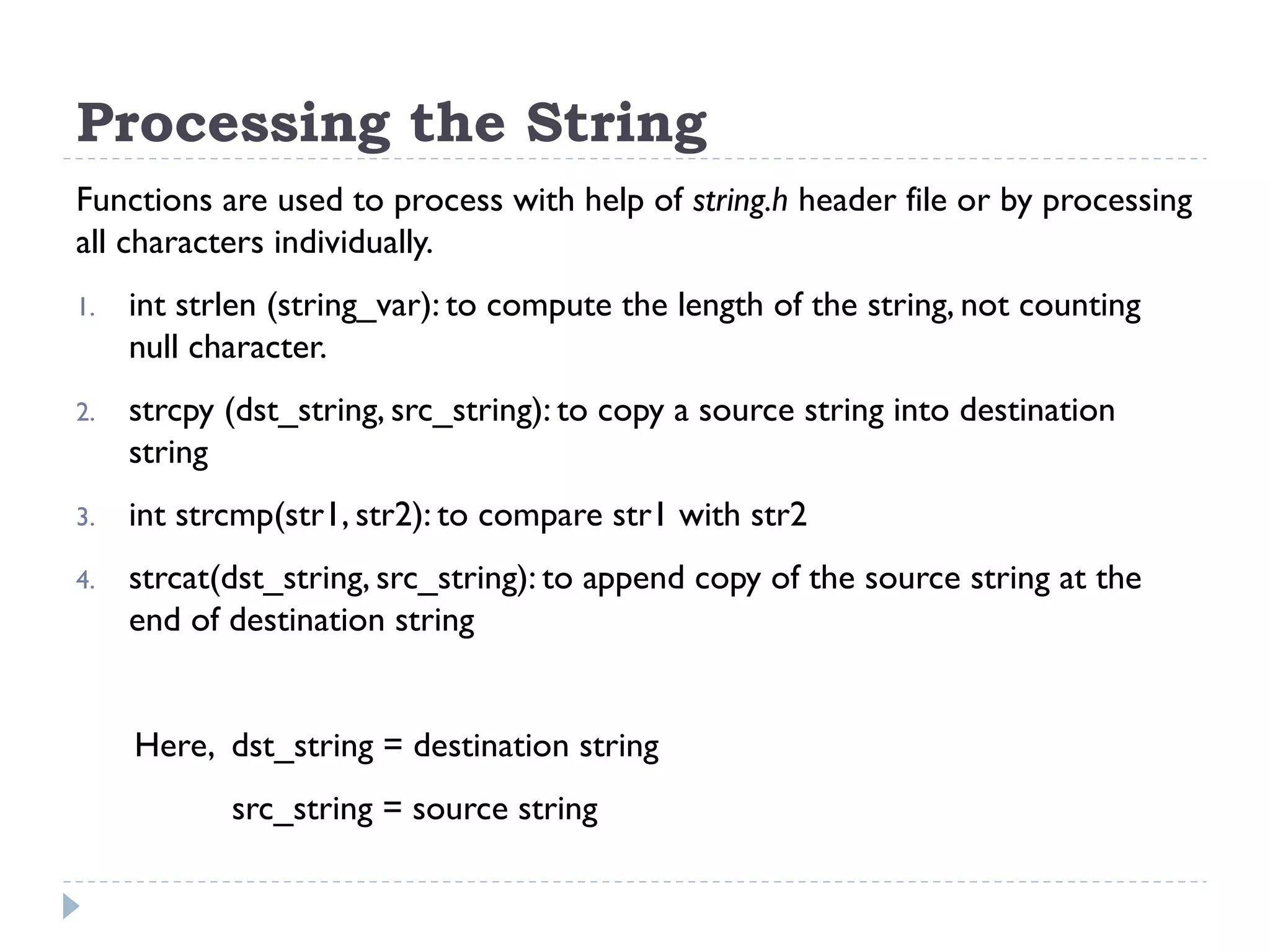The document explains the concept of strings in programming, defining them as one-dimensional character arrays terminated by a null character '�'. It covers initialization examples, reading and writing strings in C/C++, and the importance of the null character for determining string length and memory allocation. Additionally, it discusses functions from the string.h header file for string processing, including length calculation, copying, comparing, and concatenating strings.
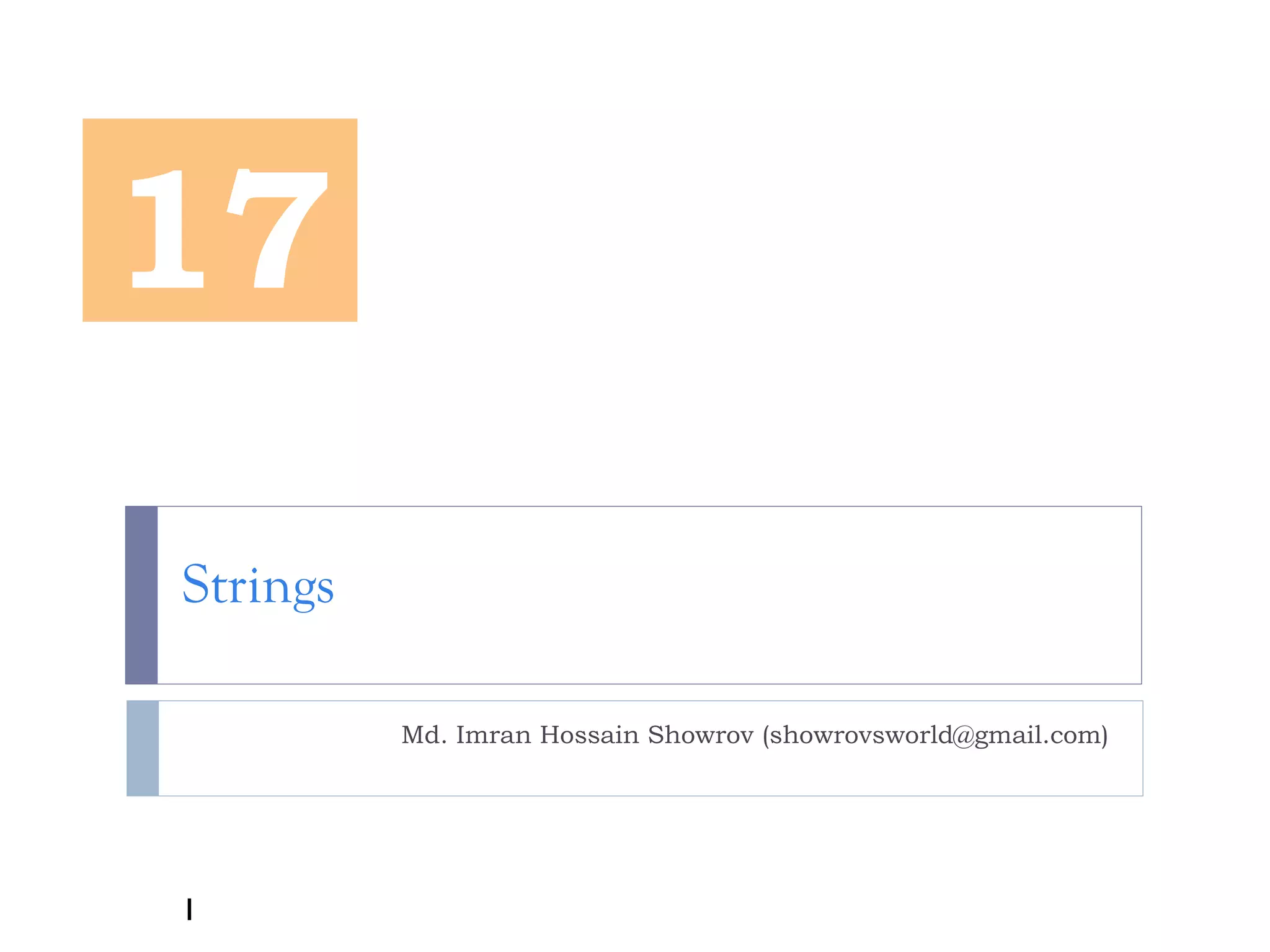
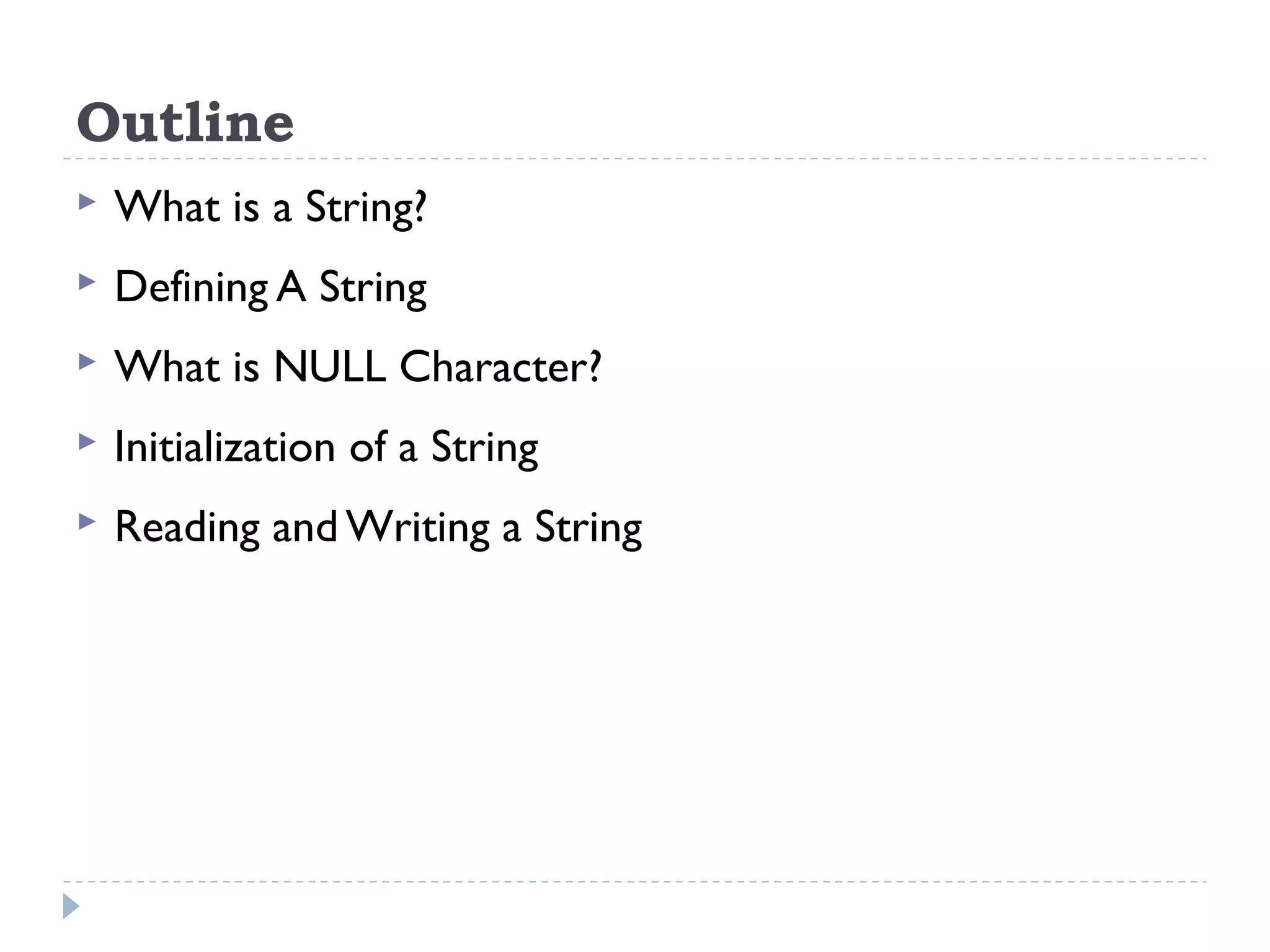
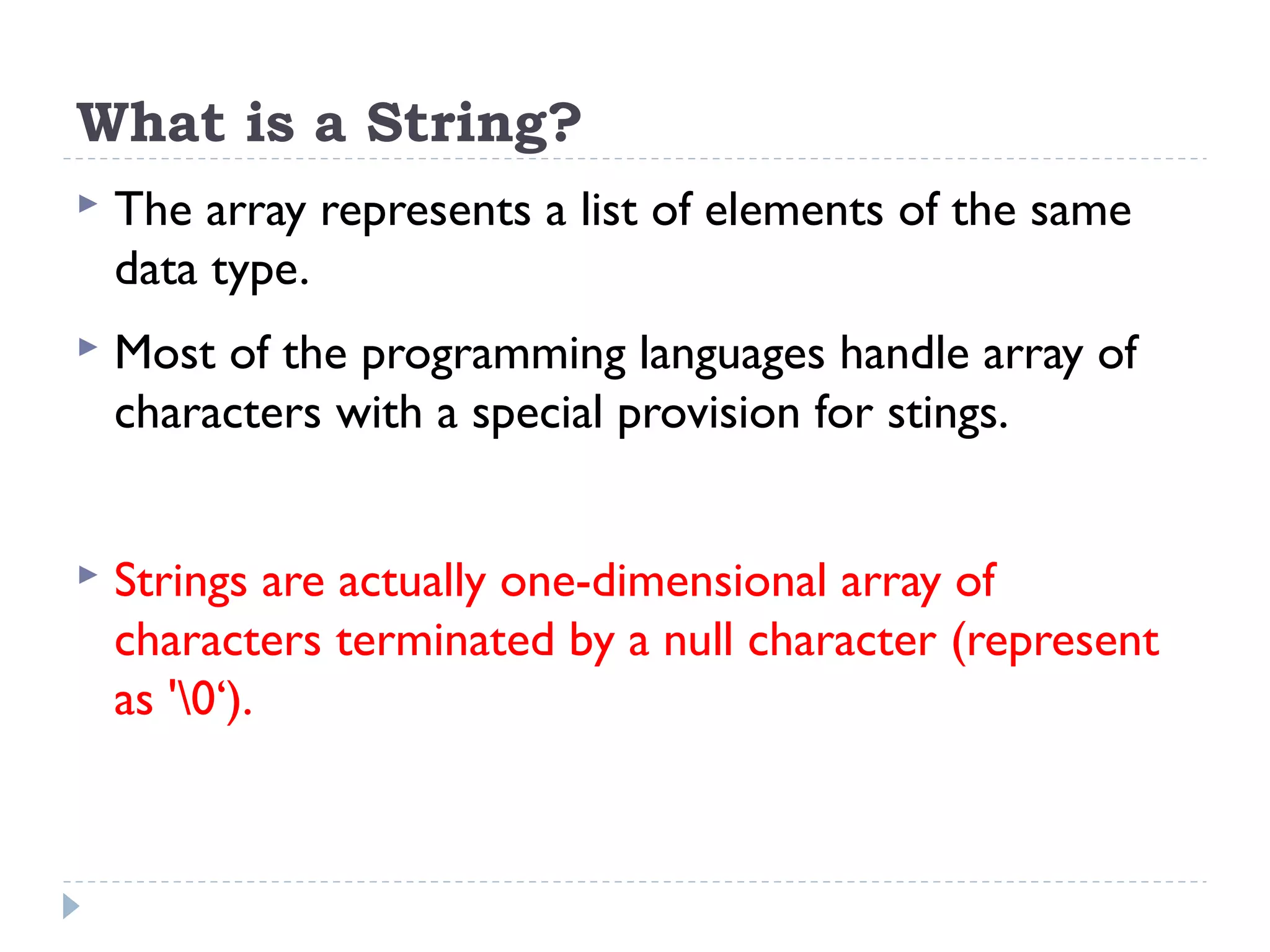
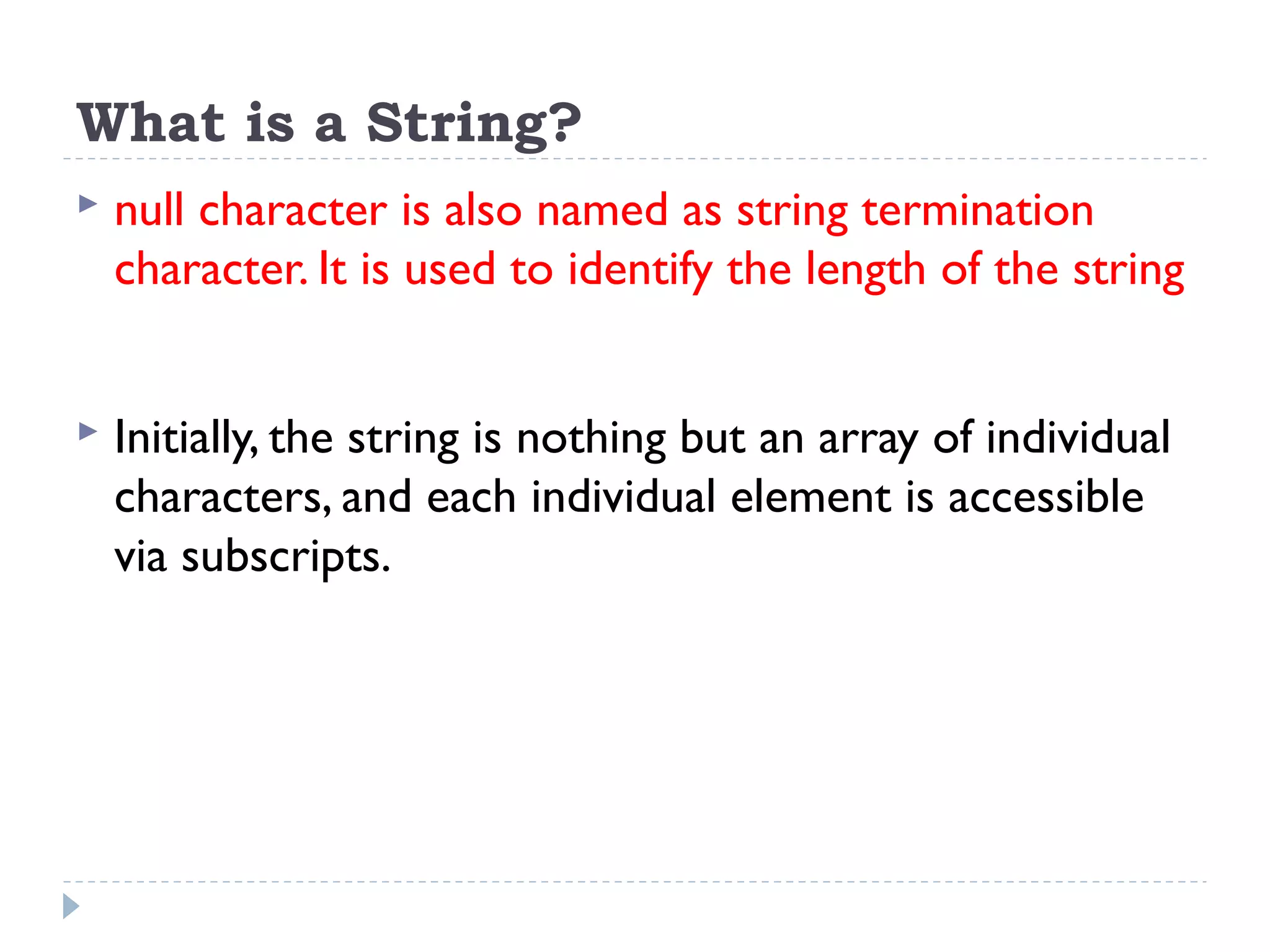
![Defining A String A string definition may be expressed as storage-class char string-name [expression]; Example: char greeting[6] = {'H', 'e', 'l', 'l', 'o', '0'};](https://image.slidesharecdn.com/lecture17-strings-190525182954/75/Lecture-17-Strings-5-2048.jpg)
![String Example1 char name[50]; /* name is a string that can consist of maximum 50 characters */ static char address[100]; /* address is a static string of maximum 100 characters */](https://image.slidesharecdn.com/lecture17-strings-190525182954/75/Lecture-17-Strings-6-2048.jpg)
![String Example2 char greeting[] = "Hello"; Following is the memory presentation of the above defined string in C/C++ Actually, we do not place the null character at the end of a string constant.The C compiler automatically places the '0' at the end of the string when it initializes the array.](https://image.slidesharecdn.com/lecture17-strings-190525182954/75/Lecture-17-Strings-7-2048.jpg)
![What is NULL Character One of the most important issues in handling strings is null character. Null character is used to terminate the string. It is needed to compute the actual length of the string. The string definition specifies the maximum length support. i.e. 50 in case of name[50] defines the maximum length of name.](https://image.slidesharecdn.com/lecture17-strings-190525182954/75/Lecture-17-Strings-8-2048.jpg)
![What is NULL Character (cont..) Example: char name [50] = “Jitender”; In this example, the length of actual stored string is 8. In that case 9th element of the array i.e. name[8] location will be used to stored null character. J i t e n d e r ‘0’ …………… [0] [1] [2] [3] [4] [5] [6] [7] [8] [49]](https://image.slidesharecdn.com/lecture17-strings-190525182954/75/Lecture-17-Strings-9-2048.jpg)
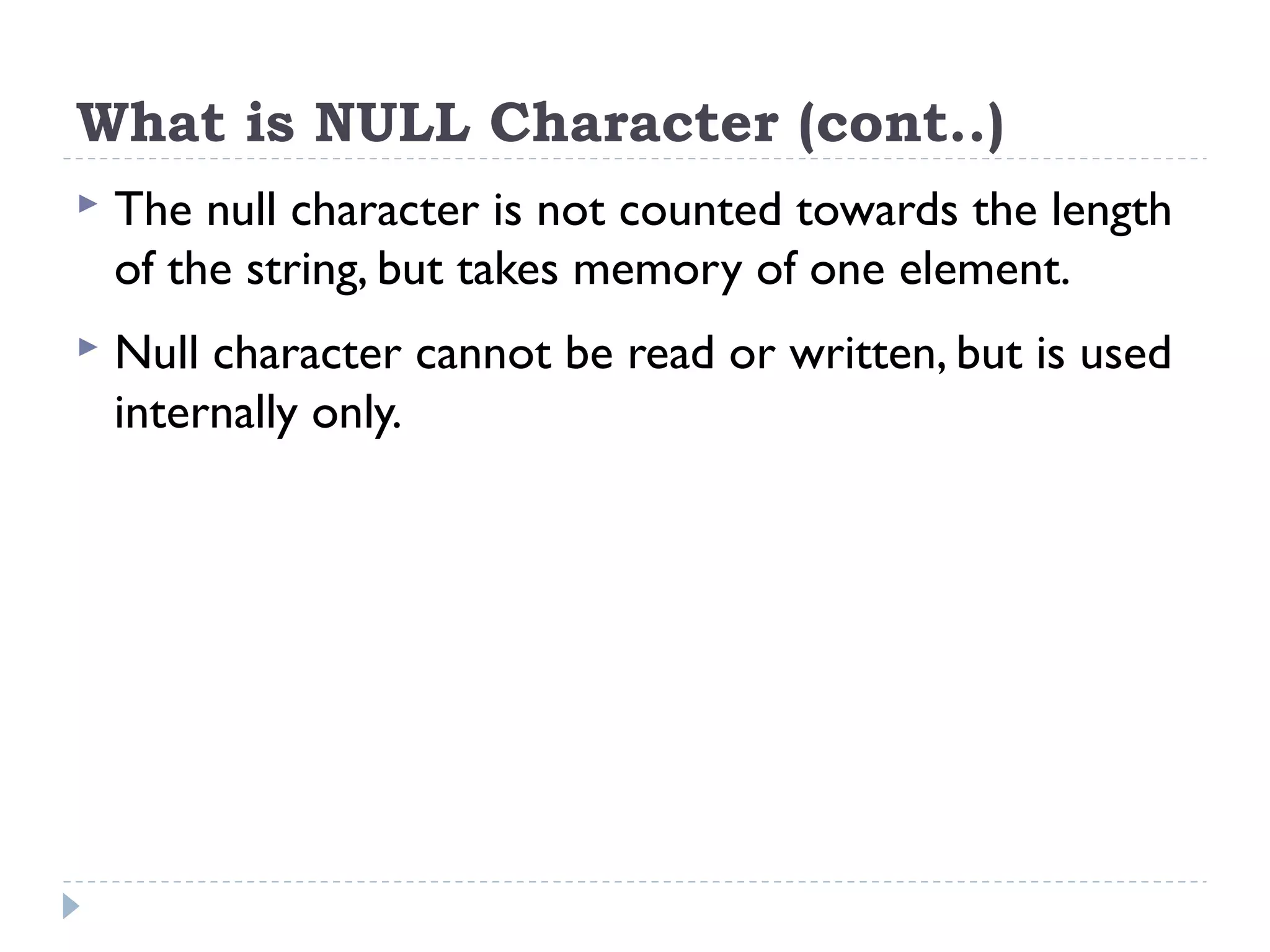
![Initialization of a String The string can be initialized as follows: - char str[30] = “Hello World”; char str[30] = {‘H’,‘e’,‘l’,‘l’,‘o’,‘ ’,‘W’,‘o’,‘r’,‘l’,‘d’}; H e l l o W o r l d 0 ………….. str [0] [1] [2] [3] [4] [5] [6] [7] [8] [9] [10] [11] [29]](https://image.slidesharecdn.com/lecture17-strings-190525182954/75/Lecture-17-Strings-11-2048.jpg)
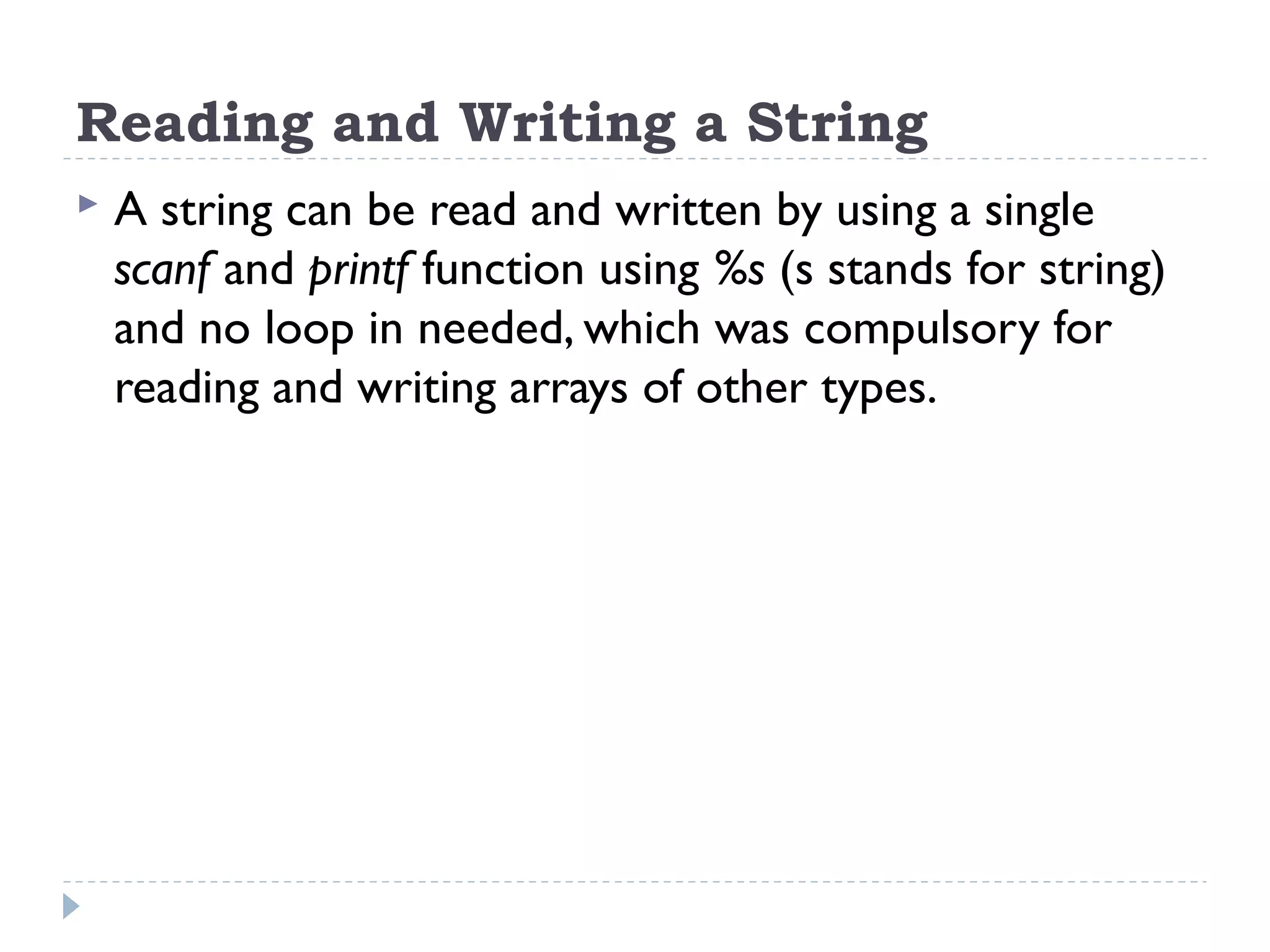
![Reading and Writing a String (Example) #include<stdio.h> #define MAX_SIZE 50 main() { char str [MAX_SIZE]; printf(“Enter a string of maximum %d characters: ”, MAX_SIZE); scanf(“%s”, str); /* no ampersand (&) is used here*/ printf(“The entered string is %sn”, str); } After the reading is complete, the null character is appended automatically at the next position inside the array.](https://image.slidesharecdn.com/lecture17-strings-190525182954/75/Lecture-17-Strings-13-2048.jpg)
